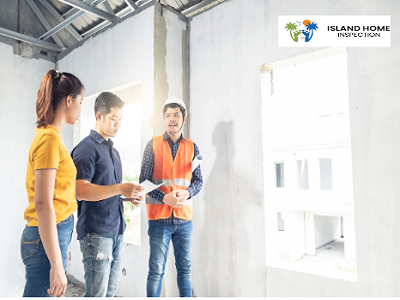Tips for a Smooth and Successful Process
Preparing your home for a Puerto Rico inspection involves a few key steps to ensure a smooth process. Start by clearing access to key areas like the attic, basement, and utility rooms. Check for and address any visible issues such as leaks or electrical hazards. Ensure that your roof, plumbing, and foundation are in good condition. Document recent repairs or upgrades to provide to the inspector. Proper preparation can help identify potential problems early and facilitate a thorough and efficient inspection, ensuring your home is in top shape.
To prepare your home for a Puerto Rico inspection, start by ensuring that key areas like the attic, basement, and utility rooms are easily accessible. Move any stored items, furniture, or clutter that might block the inspector’s access to these spaces. Clear any obstructions from pathways and open any locked doors to facilitate a thorough examination.
By making these areas accessible, you help the inspector conduct a comprehensive assessment, which allows for a complete evaluation of the home's condition. This proactive step can also prevent delays and ensure that all aspects of the property are properly inspected, leading to a more accurate and efficient inspection process.

Before the inspection, thoroughly check your home for visible issues like leaks, damaged paint, or exposed wiring. Repair any leaks, secure loose wiring, and fix noticeable defects such as water stains or peeling paint. Ensure all electrical outlets and switches are working correctly. Addressing these minor problems beforehand can prevent them from being flagged as major concerns and positively impact the inspector’s overall evaluation of your home.
Inspecting your roof and attic is crucial for a successful home inspection. Start by examining the roof for any signs of damage such as missing or damaged shingles, rusted flashing, or visible leaks. Ensure that the attic is properly insulated and ventilated, and check for any signs of moisture or pest infestations.
Look for sagging or structural issues in the attic that could indicate underlying problems with the roof. Addressing these issues by repairing or replacing damaged components and improving insulation can help prevent future problems and contribute to a favorable inspection outcome.
Foundation stability is a critical aspect of home maintenance, especially in areas prone to heavy rainfall and shifting soils. Examine your foundation for any visible signs of damage, such as cracks in walls, uneven flooring, or shifts in the foundation itself. Ensure that the drainage system around the foundation is functioning properly and that there are no signs of erosion or moisture accumulation.
Address any issues by repairing cracks, reinforcing foundation walls, and improving drainage. By maintaining a stable foundation, you help preserve the structural integrity of your home and prevent potential problems that could arise from foundation instability.
Documenting recent repairs and upgrades is crucial for a successful home inspection. Collect and organize receipts, warranties, and before-and-after photos of any work performed. This documentation helps the inspector understand the improvements made and demonstrates your commitment to maintaining the property. Detailed records, such as those for a new roof or updated plumbing, can clarify changes and potentially alleviate concerns, contributing to a more favorable inspection outcome.
Collecting receipts for all recent repairs and upgrades is essential for a smooth home inspection. Receipts provide proof of the work done and the associated costs, giving the inspector clear evidence of the improvements made. This documentation helps validate the condition of the repairs and shows that maintenance has been properly handled.
Including warranties for new appliances or systems is crucial for the inspection process. Warranties not only demonstrate that you have invested in quality products but also show that these items are covered for future issues. Properly organizing and presenting these warranties can reassure the inspector of the ongoing reliability and maintenance of your home’s components.
Providing before-and-after photos of any significant repairs or upgrades can greatly benefit the inspection process. These visual records showcase the extent and quality of the work done, helping the inspector understand the improvements made. Photos can highlight problem areas that have been addressed and give a clearer picture of the overall condition of your home.
Highlighting major repairs, such as roof replacements or plumbing updates, with detailed documentation helps the inspector understand the scope of the work done. This information shows that significant issues have been professionally addressed and provides context for any recent changes. Properly documented major repairs can mitigate concerns and positively influence the inspector’s assessment.
Creating a summary document that outlines all recent repairs and upgrades offers a concise overview for the inspector. This summary should include key details about the work performed, the dates, and any relevant documentation. A well-prepared summary document helps streamline the inspection process and provides a clear reference for the inspector to evaluate the condition of your home.
Utility rooms, such as those housing electrical panels, water heaters, and HVAC systems, should be clean and accessible for a thorough inspection. Remove any clutter or obstructions that might block the inspector’s view or hinder access to these essential systems. Check that all systems are operational and in good condition, and ensure that there are no signs of damage or disrepair.
For instance, verify that electrical panels are free of dust and that water heaters are properly maintained. By preparing these areas in advance, you help facilitate a smooth inspection process and demonstrate that your home’s critical systems are well-maintained and functioning properly.
Preparing your home for a Puerto Rico inspection involves addressing visible issues, checking essential systems, and documenting recent repairs. By clearing access to key areas, fixing minor defects, and ensuring your home’s systems are in top condition, you can facilitate a smoother inspection process. Providing detailed records of recent upgrades will also enhance the inspector’s perception of your property. For a thorough and professional home inspection, trust Island Home Inspections LLC, located at 185 Calle Arrecife, Hatillo, PR 00659. Contact 787-356-4531 to schedule your inspection today.











































































